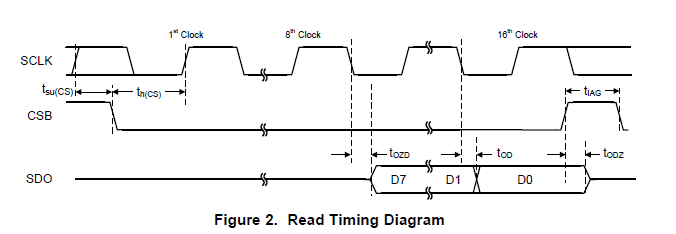Hello TI Team!
On page 5 of the LDC1000's datasheet (electrical characteristics) the min. and max response times of the sensor are given with (Responsetime x 1/f_sensor).
On page 21 the sensor's ODR is calculated using Responsetime/3.
What is the difference between min/max responsetime and ODR?
On page 7 (timing requirements) what is the t_IAG (Inter Access-Gap) or where can I find it in the diagram?
Thank you,
Regards, Thomas


